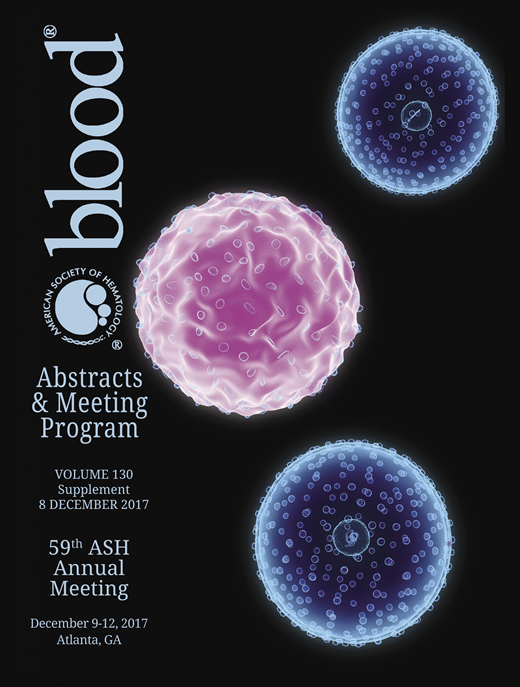Abstract

Background: Venetoclax (VEN) is a selective, small molecule inhibitor of anti-apoptosis protein BCL-2 that has antitumoral activity against multiple myeloma (MM) cell lines and primary samples, notably those with translocation t(11;14). Recent data suggest that dexamethasone (DEX) enhances the expression of BCL-2 and pro-apoptotic protein Bim, shifting its binding towards BCL-2 and sensitizing MM cells to VEN. Therefore, the combination of VEN with DEX may provide a novel therapeutic approach to improve clinical outcomes in patients with MM, including those with t(11;14) and also those who express higher levels of resistance factors (eg, MCL-1).
Methods: This cohort is part of an ongoing, dose-escalation, open-label, phase 1 study (NCT01794520) and it is being conducted to evaluate safety profile, pharmacokinetics (PK) and preliminary efficacy of VEN in combination with DEX in patients with t(11;14)-positive MM. Eligible patients were adults (≥18 years of age) who had previous treatment with a proteasome inhibitor and an immunomodulatory drug, an Eastern Cooperative Oncology Group score ≤1, measurable disease, and adequate bone marrow function. Presence of t(11;14) was confirmed for all eligible patients by means of FISH performed at a central laboratory. Patients were given oral VEN 800 mg/day plus oral DEX 40 mg (20 mg for patients ≥75 years of age) on days 1, 8, and 15 of each 21-day cycle. Preliminary efficacy was assessed as the overall response rate (ORR), time to progression (TTP), and duration of response (DOR) of VEN combined with DEX based on the 2011 International Uniform Response Criteria for Multiple Myeloma.
Results: Twenty patients with t(11;14) R/R MM were enrolled (17 [85%] male; median age, 63 years [range, 46-77 years]). International Staging System status was I in 9 patients (45%), II in 7 (35%), III in 3 (15%), and missing in 1 (5%).The median number of prior therapies was 3 (range, 1-7). Sixteen (80%) patients had received bortezomib (11 [55%] refractory), 18 (90%) had received lenalidomide (17 [85%] refractory), and 17 (85%) had prior autologous stem cell transplantation. In addition, 8 patients (40%) were refractory to pomalidomide, and 4 (20%) were refractory to carfilzomib. Common adverse events (AEs) in ≥20% of patients were nausea, diarrhea, or insomnia (35% each); hyperglycemia or hypophosphatemia (30% each); and thrombocytopenia, leukopenia, pyrexia, upper respiratory tract infection, cough, nasal congestion, increased lactate dehydrogenase, increased creatinine, or hypokalemia (20% each). Grade 3/4 AEs in ≥10% of patients were lymphopenia or hypophosphatemia (15% each), as well as hyperuricemia or laboratory tumor lysis syndrome (10% each). Serious AEs in ≥2 patients were 2 cases of laboratory tumor lysis syndrome (10%). No deaths have occurred. ORR (partial response or better) was observed in 65% of patients (13/20) and included 7 very good PRs and 6 PRs. Six discontinuations of study drug occurred, and all were due to disease progression. ORRs were 82% (9/11) and 71% (12/17) in patients refractory to bortezomib and to lenalidomide, respectively. The ORR was also comparable between patients who had 1-3 prior lines of therapy (64% [7/11]) and those who had ≥3 lines (78% [7/9]). The median time to first response was 1.4 months (95% CI, 1.3-2.0 months). As of May 15, 2017, the median time on study was 6 months (range, <1 to 9 months). For this data cut, the median TTP and DOR have not been reached yet, but the estimated 6-month TTP rate was 64% (95% CI, 39-81%).
Conclusions: VEN plus DEX demonstrated a tolerable safety profile in patients with t(11;14) R/R MM. Similar to previously reported results with VEN monotherapy, this combination appears to be clinically active regimen in patients whose disease is positive for t(11;14), with 65% of patients achieving a response of PR or better. These early findings support the further investigation of VEN combined with DEX in this patient population.
Kaufman: Amgen, Novartis: Research Funding; Amgen, Roche, BMS, Seattle Genetics, Sutro Biopharma, Pharmacyclics: Consultancy. Gasparetto: Janssen, BMS, Celgene: Other: Travel, accommodations, or other expenses paid or reimbursed; Celgene: Research Funding; Janssen, BMS, Celgene: Consultancy; Janssen, BMS, Celgene, Takeda: Honoraria. Mikhael: Onyx, Celgene, Sanofi, AbbVie: Research Funding. Moreau: Millennium: Consultancy, Honoraria; Celgene, Janssen, Takeda, Novartis, Amgen, Roche: Membership on an entity's Board of Directors or advisory committees; Takeda: Honoraria; Novartis: Consultancy, Honoraria; Janssen: Consultancy, Honoraria; Bristol-Myers Squibb: Honoraria; Amgen: Honoraria; Celgene: Consultancy, Honoraria; Onyx Pharmaceutical: Consultancy, Honoraria. Touzeau: AbbVie: Research Funding. Vij: Takeda, Onyx: Research Funding; Celgene, Onyx, Takeda, Novartis, BMS, Sanofi, Janssen, Merck: Consultancy. Facon: Amgen, Celgene: Speakers Bureau. Pegourie: Takeda, Novartis, Janssen, BMS: Consultancy. Benboubker: Takeda, Celgene, Janssen, Amgen: Consultancy. Boise: Abbvie: Consultancy; Eli Lilly and Company: Research Funding. Alzate: AbbVie: Employment, Equity Ownership. Dunbar: AbbVie: Employment, Equity Ownership. Jia: AbbVie: Employment, Equity Ownership. Freise: AbbVie: Employment, Equity Ownership. Verdugo: AbbVie: Employment, Equity Ownership. Ross: AbbVie: Employment, Equity Ownership. Maciag: AbbVie: Employment, Equity Ownership. Kumar: Celgene, Millennium/Takeda, Onyx, AbbVie, Janssen, Sanofi, Novartis, Amgen, Genentech, Merck, Oncopeptides, Roche, Skyline Diagnostics: Research Funding; Skyline: Honoraria; Celgene, Millennium, BMS, Onyx, Janssen, Noxxon, AbbVie, Amgen, Merck, Oncopeptides, Skyline Diagnostics, Takeda: Consultancy.
Author notes
Asterisk with author names denotes non-ASH members.

This icon denotes a clinically relevant abstract

